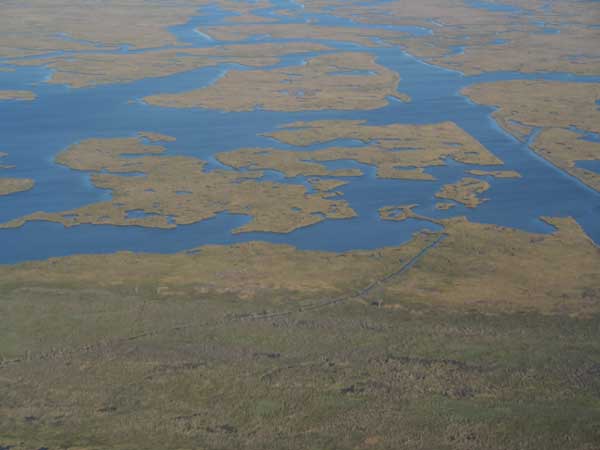Post-Katrina Study Shows Strength of Salt Marshes


Hurricanes Katrina and Rita sent devastating waves through Louisiana's coastal plains in 2005, washing away hundreds of square miles of the state's wetlands.
Yet post-hurricane surveys of the Breton Sound, a large area of marshes along the state's southeastern edge, left researchers puzzled. All of the sound's wetlands suffered an equal pounding, yet the storms destroyed certain areas and left others relatively intact.
"It was as if the hurricane had never touched it," said Duncan FitzGerald, a professor at Boston University who has spent more than two decades studying the region. "It was night and day in the resilience of these two plant communities."
Researchers wanted to find out why some areas withstood the onslaught while others crumbled, and a new study has provided some answers. It turns out that high salt levels can be an advantage for marshes when it comes to withstanding a beating.
"The saline portions of the marsh lost about a half percent of land area — that's in contrast to the freshwater marshes that lost about 10 percent, so it's quite a difference and it really shows up in a map," said Boston University's Nick Howes, lead author of the new study.
Howes and a team of scientists ran extensive soil tests both in the field and in the laboratory, comparing multiple sites across Breton Sound in the two years following the storms.
It turns out that salt marshes are tough because they support tough plants. In the more saline areas, the plants produce dense webs of thick roots that bore deep into the ground, forming a kind of anchor that keeps the soil from being eroded.
Get the world’s most fascinating discoveries delivered straight to your inbox.
FitzGerald said this has important implications. Louisiana wetlands are at-risk ecosystems, and understanding the relative resilience of salt marshes can help inform policy decisions on how to treat and maintain these coastal areas to help them survive.
In addition, the marshes act as a buffer, protecting inland areas from the ravages of powerful waves. "They're one of the speed bumps along the way for the storm surges," FitzGerald told OurAmazingPlanet.
And in light of the National Oceanic and Atmospheric Administration's prediction that 2010 could be one of the most active hurricane seasons on record, knowing which wetlands best survive storms could be an issue of increasing interest.
Although Louisiana's marshlands are facing complex problems, FitzGerald said, "There are actions that can be taken to prolong the longevity of these wetlands."
- Natural Disasters: Top 10 U.S. Threats
- Hurricanes Could Bust Gulf Oil Pipelines
- Images: Hurricane Destruction
This article was provided by OurAmazingPlanet, a sister site to LiveScience.


